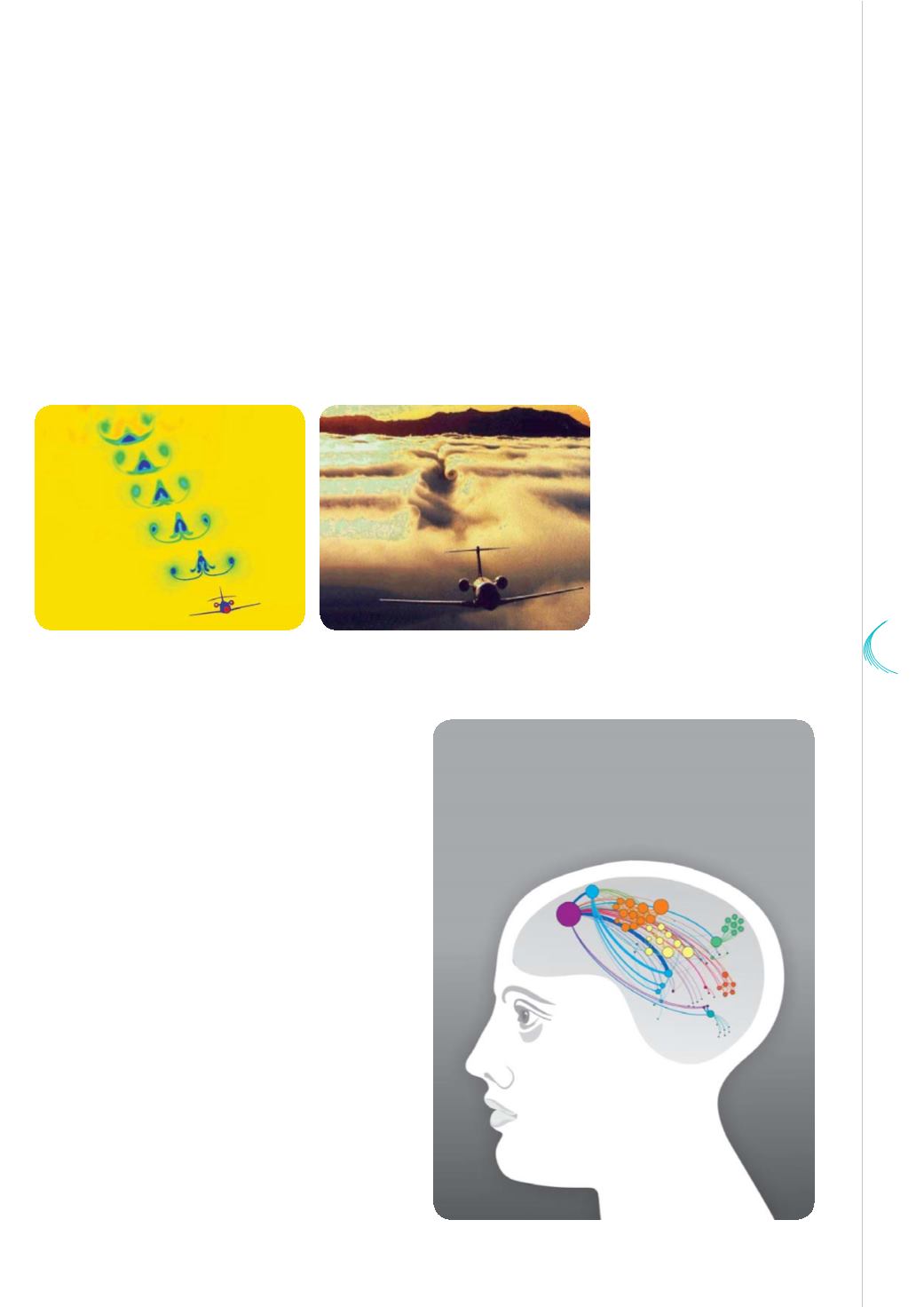

350
YEARS
OF
SCIENCE
79
A modeling of airplane wake turbulence
© Frédéric Alauzet/Inria
© NO from Kopf 5c - Fotolia
for progress to go. Yet essential fields are still ill-understood. The most critical of them is certainly that of
computer security, where craft has reached its limits: it now requires science, at the highest levels of theory
and practice.
It is important to point out that, in the 21
st
Century, mechanics, applied mathematics, control theory and
computer science are increasingly entwined into one another. Such is directly the case in the theories of
turbulence that lie at the core of modern mechanics and require large computer simulations. More generally,
computer-aided design is replacing paper documents and physical prototypes with three-dimensional
computermodels, whichalsomake it possible to simulate theeffects of the control theory-based software that
drives the objects depending on their interactions with the environment. The image provided here concerns
the aerodynamics of an
airplane, a field in which our
colleague Paul Germain
has distinguished himself.
Other examples include
Computer
Numerical
Control (CNC) machines,
robotics, 3D printing, etc.
Finally, the algorithmic concepts
and tools of information science are
now taking a prominent part in our
understanding of the most complex
of natural phenomena, from the
formation and evolution of galaxies
to the in-depth understanding
of the living, for which we draw
progressive models of proteins,
cells,
organs,
organisms,
populations and eventually – who
knows? – the brain. After the
power of physical levers, which
are various and quite well known
to us, now comes the power of
information, as a unique lever that
is only starting to amaze us.


















